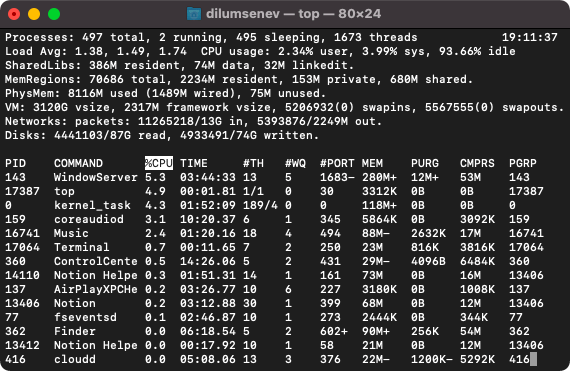
In this article, you will see the main terminal commands you will most likely use daily as a developer. Thus, the terminal is an essential tool in any developer's toolbelt, and knowing how to use it is very beneficial. Developers use the terminal for tasks such as: When it comes to developers, the terminal it's even more important because they spend a good chunk of time each day using it. One example would be creating a directory from the terminal with one command. Using the terminal, users can accomplish the same tasks as when they use the standard graphical user interface (GUI) and even more. The Mac terminal is a command-line interface (CLI) that allows users to interact with the operating system through text commands. 7 min read Photo by Kenny Eliason / Unsplash.- u user only returns commands owned by the named user.When used with -P above, it can significantly speed up lsof's output. -n disables the conversion of network numbers to hostnames.-P disables the conversion of port numbers to port names, speeding up output.Process IDs can also be excluded with a ^, as in 123,^456, which would specifically exclude PID 456. Multiple PIDs can be set by using commons, such as -p 123,456,789. -p restricts lsof to a particular process ID (PID).Instead, it allows the user to specify the protocol and status for the command to return. But when paired with the -i flag, -s works differently.

-s typically forces lsof to display file size.The precursor can also be used to specify hostnames in the same way, but both remote IP addresses and hostnames cannot be used simultaneously. IPv6 addresses can be specified in the same fashion. Using returns only connections to the IPv4 address 1.2.3.4.A range of ports can be specified with a dash, as it -iTCP:25-50. iTCP:25 returns only TCP connections on port 25. iTCP or -iUDP returns only TCP and UDP connections. The -i flag also can be expanded to specify further details.Adding a 6 instead ( -i6) displays only IPv6 connections. Adding a 4, as in -i4, displays only IPv4 connections. -i displays open network connections and the name of the process that is using the connection.For information on more flags and technical explanations of each, check out lsof's man page or run man lsof at a Terminal prompt.


 0 kommentar(er)
0 kommentar(er)
